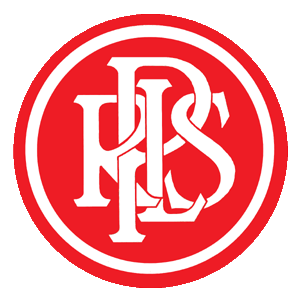
Cape May Seashore Lines is a short line railroad in southern New Jersey. It offers two excursion services: a 30-mile (48 km) round trip between Richland and Tuckahoe and a 14-mile (23 km) round trip between Rio Grande, Cold Spring Village, and Cape May City. The track is owned by NJ Transit and leased to the Seashore Lines. Connections are provided with Conrail's Beesley's Point Secondary, owned jointly by CSX and Norfolk Southern, at the north end in Tuckahoe. Tony Macrie has been president of the Seashore Lines since he formed the railroad in 1984.

The Pennsylvania-Reading Seashore Lines was a railroad that operated in South Jersey in the 20th century. It was created in 1933 as a joint consolidation venture between two competing railroads in the region: the Pennsylvania Railroad and the Reading Company.

The Lackawanna Cut-Off was a rail line built by the Delaware, Lackawanna & Western Railroad (DL&W). Constructed from 1908 to 1911, the line was part of a 396-mile (637 km) main line between Hoboken, New Jersey, and Buffalo, New York. It ran west for 28.6 miles (46.0 km) from Port Morris Junction in Port Morris, New Jersey, near the south end of Lake Hopatcong about 45 miles (72 km) west-northwest of New York City, to Slateford Junction in Slateford, Pennsylvania near the Delaware Water Gap.
The 1896 Atlantic City rail crash occurred soon after 6:30 pm on July 30, 1896, at a crossing just west of Atlantic City, New Jersey, crushing five loaded passenger coaches, killing 50 people and seriously injuring approximately 60.
The West Jersey and Seashore Railroad (WJ&S) was a Pennsylvania Railroad subsidiary in the U.S. state of New Jersey with a connection to Philadelphia. It was formed through the merger of several smaller roads in May 1896. At the end of 1925 it operated 379 miles (610 km) of road on 717 miles (1,154 km) of track; that year it reported 166 million ton-miles of revenue freight and 332 million passenger-miles. The railroad became part of Pennsylvania-Reading Seashore Lines in 1933.
The 1922 Winslow Junction train derailment was a July 2, 1922 accident on Atlantic City Railroad's Camden to Atlantic City route. Train № 33 the Owl going 90 miles (140 km) per hour sped through an open switch at Winslow Junction. 7 were killed, 89 were injured.
The Connellsville train wreck was a rail accident that occurred on December 23, 1903, on the Baltimore and Ohio Railroad near Connellsville, Pennsylvania. The Duquesne Limited, a passenger train, derailed when it struck a load of timber lying on the tracks. The timber had fallen from a freight train minutes before the collision. The crash resulted in 64 deaths and 68 injuries.

The Rockport train wreck occurred in Rockport in Mansfield Township, New Jersey, United States, about three miles outside of Hackettstown, on June 16, 1925. A violent storm washed debris onto a grade crossing, derailing a Lackawanna Railroad (DL&W) train. The crash killed 42 passengers and five crewmen and injured twenty-three others.

The South Bend Train Wreck occurred on June 27, 1859, between Mishawaka and South Bend in Indiana on the Michigan Southern Railroad killing 42 people and injuring 50 more.
The Indianola Train Wreck was a railway accident that occurred at 7:08 a.m. on May 29, 1911, on the Chicago, Burlington and Quincy Railroad one half mile west of Indianola, Nebraska leaving 18 dead and 32 injured.

On August 12, 1939, the City of San Francisco train derailed outside of Harney, Nevada, United States, killing 24 and injuring 121 passengers and crew. The derailment was caused by sabotage of the tracks. Despite a manhunt, reward offers, and years of investigation by the Southern Pacific Railroad (SP), the case remains unsolved.
The Red Arrow was a night train operated by the Pennsylvania Railroad that ran from New York City to Detroit. It had an additional section going to and from Washington, D.C. This was an unusual train, in that the PRR had few trains that ran to Detroit. More of the PRR trains went west to Chicago or St. Louis. The Red Arrow became the premier PRR train on the New York - Detroit circuit.






